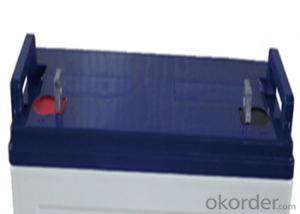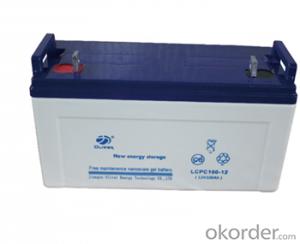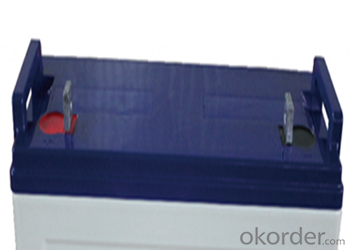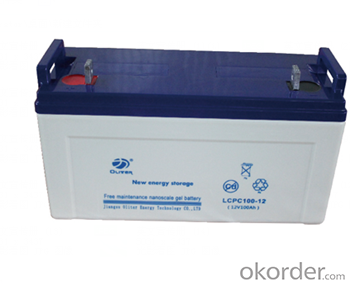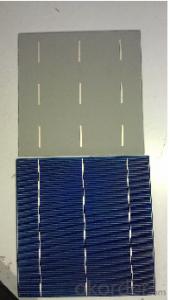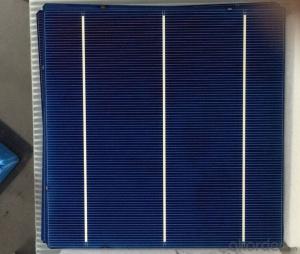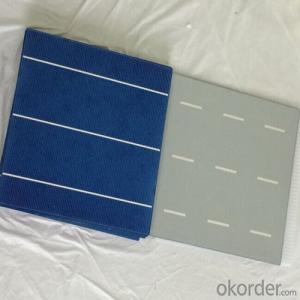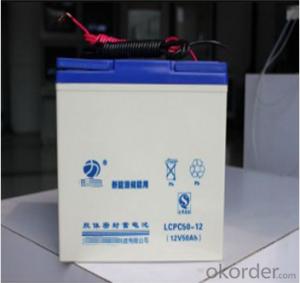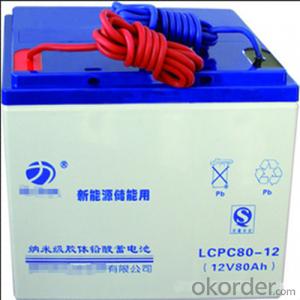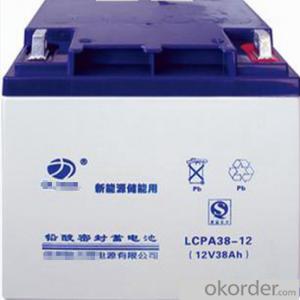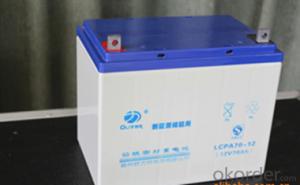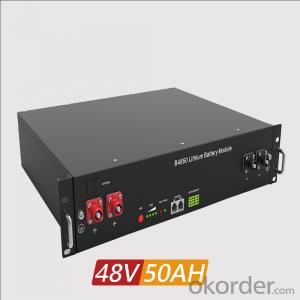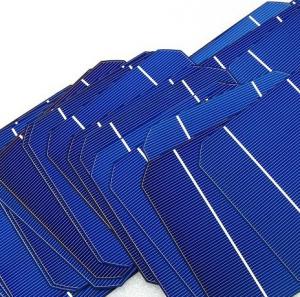Flexible Organic Solar Cells - Storage Battery LCPC Series 6V~12V 24~250AH
- Loading Port:
- China main port
- Payment Terms:
- TT OR LC
- Min Order Qty:
- 1 pc
- Supply Capability:
- 400000 pc/month
OKorder Service Pledge
OKorder Financial Service
You Might Also Like
Structure of Product Description
What is the product?
· Precision explosion relief valve shall be adopted
· Advanced wrapping technology and assembly technology
· Designed life is fifteen years,excellent performance of battery in low temperature and superiority in consistence and stability
· Can be used at vertical or horizontal orientation
· Balanced design for both floating and cyclic operation
· Low self-discharge rate and long shelf life
· Connecting terminal adopts stainless steel bolt,thus it has the characteristics of high strength and non-deforming
· Design with patented corrosion resisting alloy and thickened plate
What is the purpose of the product
Data Centre (High Rate UPS)
Telecommunication
Banks & Financial Centre
Hospital& Testing Laboratories
Power Generation Plants
High Power Backup Supply
Design with patented corrosion resisting alloy and thickened plate
Product Advantage
Low self discharge:When using high purity raw materials, which can hinder the cathodic reduction water diffusion effect and inhibition of PBO spontaneous reduction pirated, so the uniformity;
Environmentally friendly:Because of electrolyte and effective adsorption in the gummed paper, any Angle using no liquid electrolyte flow out
Long service life: stop layering and sulfate reducing adhesive and plate separation and provide effective oxygen compound channels, more than 20% higher than the life of the lead-acid battery life from a year earlier, the design life for more than 10 years
Main features of the product:
*safety and reliable
*environmental friendly and fast delivery
*low self diacharge
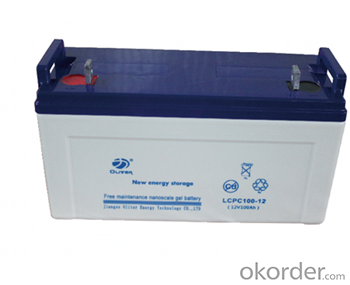
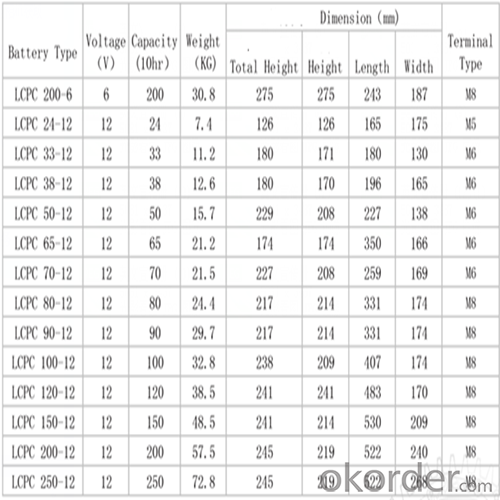
FAQ:
*Question:Gel battery can work normally in low temperature
Answer:Gel battery at low temperature gel electrolyte resistance change is not big, so the low temperature performance is good, compared to the lead-acid battery well above 20%
*Question:What application does it can apply for?
Answer:It can be applied to the wind power generation system, solar street lamp, garden lamp, solar energy storage system.
*Question:How do you pack your products?
Answer:We have rich experience on how to pack the panels to make sure the safety on shipment when it arrives at the destination.
- Q: How are solar cells used in spacecraft?
- Solar cells are used in spacecraft to convert sunlight into electricity, providing a reliable and renewable source of power for various systems and instruments on board.
- Q: How long does it take to install solar cells on a residential property?
- The duration of installing solar cells on a residential property can vary depending on various factors such as the size of the system, complexity of the installation, and the availability of resources. However, on average, it can take anywhere from a few days to a few weeks to complete the installation process.
- Q: Can solar cells be used in electric bikes or scooters?
- Yes, solar cells can be used in electric bikes or scooters to harness the sun's energy and convert it into electricity to power the vehicles. By incorporating solar panels, these vehicles can become more sustainable and reduce their dependence on traditional energy sources.
- Q: What is the maximum efficiency possible for a solar cell?
- The maximum efficiency possible for a solar cell is currently around 46%.
- Q: How do solar cells affect property value?
- Solar cells can positively affect property value by reducing energy costs, increasing energy efficiency, and providing a sustainable and environmentally friendly energy source. Additionally, solar panels can be seen as a desirable feature by potential buyers, leading to increased demand and higher property values.
- Q: Can solar cells be used for off-grid living?
- Yes, solar cells can be used for off-grid living. Solar cells, also known as photovoltaic cells, convert sunlight into electricity. This renewable energy source can be harnessed to power various appliances and systems in off-grid homes, providing a sustainable and independent energy solution. By storing excess electricity in batteries, solar cells ensure a continuous power supply even during cloudy or nighttime conditions. This makes them a reliable and cost-effective option for off-grid living, reducing reliance on traditional power grids and minimizing environmental impact.
- Q: What happens to excess electricity generated by solar cells?
- Excess electricity generated by solar cells can be stored in batteries for later use, or it can be fed back into the grid to be used by other consumers.
- Q: How do solar cells perform in high humidity environments?
- Solar cells typically perform well in high humidity environments. However, excessive moisture or prolonged exposure to water can lead to a decrease in their efficiency. It is important to ensure proper waterproofing and maintenance of the solar panels to prevent any potential damage caused by moisture.
- Q: How can I calculate the cost of using solar cells if I put a fully-functional solar system in my house?
- Sunrun solar lets you get started for as little as $0 down, but to install it, it will cost you a lot.
- Q: What is the average cost of a solar cell?
- The average cost of a solar cell can vary depending on various factors such as the type, size, and efficiency of the cell, as well as the market conditions and location. However, as of 2021, the average cost per watt for residential solar panels ranges between $2.50 and $3.50.
Send your message to us
Flexible Organic Solar Cells - Storage Battery LCPC Series 6V~12V 24~250AH
- Loading Port:
- China main port
- Payment Terms:
- TT OR LC
- Min Order Qty:
- 1 pc
- Supply Capability:
- 400000 pc/month
OKorder Service Pledge
OKorder Financial Service
Similar products
Hot products
Hot Searches
Related keywords
